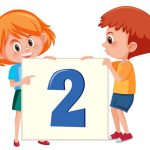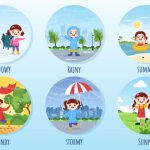Probably the first question that comes to your mind is — What is parallel play? Parallel play is when a toddler may play alongside a group of children and not with them. Most parents worry about why their child is being so antisocial and why they are not mixing with children their own age. However, there is no need to worry. It is just a part of their developmental process and marks a child’s first steps in learning social interaction and we are here to tell you about the importance, benefits and types of activities for your child in parallel play.
Parallel play examples are when a child shows egocentric behaviour and appears disinterested in joining the activities of their playmates. They may not share the same toy but there is constant mimicking of the other’s behaviour. It enhances their observational and social skills and you will see that when one child plays with building blocks, the other one will start doing the same. Imitation is a sure sign that your toddler is fast moving towards the next stage of a child’s development — the interactive play stage.
What is Parallel Play in Child Development
It is commonly seen in toddlers and the parallel play age begins when they are approximately 2 years old and comes right after the solitary and the onlooker play stages. Even though children don’t interact with one another during parallel play, it’s surprising how much they learn when it comes to emotions, words and reactions just by observation. Even without engagement with others, they benefit from the mere presence of another child playing near them.
This is the age which marks the beginning of a child’s exposure to new people and it can be overwhelming for them as they are overcome by mistrust and fear. Copying other children’s actions without leaving their solitary and comfortable zone is just their way of trying to acquaint themselves with others. Parallel play helps them in the socialisation process as it gradually dispels their doubts about new people and is the path to interactive play.
Benefits of Parallel Play in Toddlers
Apart from learning social skills, parallel play has many other benefits for your toddler as well.
- Gross and fine motor development
- Speech development
- Expressing their desires and feelings
- Learning social boundaries
- Learning to share
During parallel play, children go through a stage of imitation and copy the people around them and begin to explore their surroundings. If they see someone throw a ball and run after it, they learn the same actions.
When your toddler overhears others talking, they learn to relate objects with a particular word and pick up new words along the way.
Children also learn reactions and how to express feelings through observation. Emotions like joy when they get something or sadness when they fall are learnt by looking at other children or adults. They learn many new emotions at this stage through parallel play.
How a child may act and show behaviour at home, might not always be suitable when they go outside. During parallel play, a toddler tries to understand this concept and develops realisation that they have to behave differently when they are outside. This teaches them personal boundaries and also develops a sense of respect for other people’s space.
When a toddler is introduced to a parallel play activity, many toys are placed in a common area and they will probably pick up what pleases them. Sometimes, your child may want to play with a toy that another child is holding. When children get very possessive and assertive about the toy they are holding, it’s time for an adult to step in and teach them that everyone has an equal right to toys kept in the common area and they must share.
Activities And Tips To Encourage Parallel Play
Parents play an integral role in helping children make progress during the parallel play stage and following a few tips makes all the difference. We have for you a few parallel play examples that you will definitely find useful.
- Start with one or two kids rather than a whole lot as it can get rather overwhelming for your toddler.
- Plan playtime for a short while at first, like maybe half an hour, otherwise your toddler might get restless.
- Place toys in the centre of the room and make it clear that they are for everyone. Also, make sure there are enough toys for everyone in the room.
- Stuffed animals, building blocks, play dough, bricks and colouring books are suitable for parallel play.
- If your toddler is used to parallel play, encourage them to interact with the other children and maybe even share their toys.
- Always remember that every child works and develops at their own pace.
- Try changing the time and location of their play sessions after a few days as this will expose them to new situations.
- Let them be creative rather than forcing activities on them.
- Some good activities to promote parallel play are drawing, storytelling, water play, sand play and outdoor games.
- After you have done your bit, just sit back and observe them from a distance.
Next Phase – Interactive Stage
After the parallel play age has passed and your child has learnt a lot of social and emotional behaviour, you will see them move towards the next stage of interactive play without much help from your side. This stage usually starts when your child is about 3 years old with an early sign being that they are more willing to share. You can facilitate this stage by monitoring their play and encouraging children to take turns while playing. Pretend play is a great parallel play example and is a great way to encourage children to interact with one another.
Parallel play is a part of growing up for toddlers and prepares them to interact socially with others. While they may not seem to be learning much through parallel play, a child learns a lot through observation. It is also the phase between solitary and interactive play and you can start encouraging social interaction between toddlers as they get comfortable with one another. If you are looking for more information on parallel play and its advantages, as well as different ways to foster it, check out the EuroKids website.















